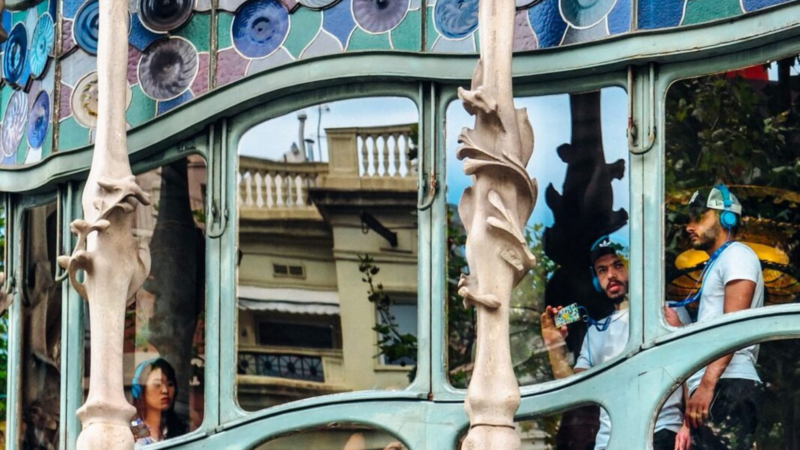A memorable tour needs to go above and beyond. The reality is that most customers expect good service so that alone isn’t enough.
This means customers are more likely remember bad service, and exceptional service (ever heard of “Joshie” the giraffe who was left at a Ritz-Carlton?), which makes the bar quite high to achieve a truly memorable tour.
Another misconception is that tour content itself (specifically, facts) is enough to make a tour stand out. But again, this is what your guests will expect (there might be low expectations for tour quality but a lot of facts is definitely one of them).
The good news is that achieving exceptional service doesn’t have to take as much energy as you may think.
In this article, I’ll explain the magic of the Peak-End Rule and offer three ways to use this concept to create a memorable experience.

Share this article
The Peak-End Rule.
Coined by psychologist Daniel Kahneman, the Peak-End Rule explains that people often remember only a small portion of an entire experience.
People tend to forget the majority of an experience (for example, a vacation), and instead rate the entire experience based on two elements;
- The best, or worst, moments (“peaks” or “valleys”)
- The beginning and ending (“transition moments”)
While “valleys” might be unavoidable (rain on a walking tour, a tour bus that breaks down, etc), “peaks” are easily created and can be injected into the experience.
I’ll use a recent trip I took to Athens as an example. I’m not going to remember every single detail of the trip (especially if I’m asked a year later; “You went to Athens? How was it?”). Things that will stand out to me would probably be;
- I had several amazing dinner experiences (“peak”)
- I bought some amazing vintage shop finds bought my new favorite jacket (“peak”)
- I was there for work, which was stressful (“valley”)
- The weather was cold & rainy (“valley”)
- I flew through Istanbul’s brand new airport which was beautiful and had great amenities (“peak”)
Overall, I had more “peaks” than “valleys”.
Moreover, one of those experiences (flying through the new airport) happened at the beginning and the end of the trip.
So if asked, I would most definitely say; “Oh I love Athens!”.
Had I had more “valleys” (or a really big one that outweighed all the positive) or had my airport experience been crummy both arriving and departing, I would probably have a negative connotation with the trip.
This can easily be applied to any tour experience. to make a memorable tour.
If you want to dive further into how the Peak-End Rule defines the customer experience, this is a good read.
How to use the Peak-End Rule to create a memorable tour.
1. Understand what the guest is buying and over-deliver.
In my experience, very few tour guides have been encouraged to look at the entire journey of a customer.
What is the tone of the website (academic or quirky)? What does the marketing pull out or infer about the experience? What inclusions are listed?
You have to know what the customers expect in order to create “peaks”.
2. Pre-plan spontaneous surprises that are easily replicable.
Creating moments is most efficient when they are replicable, however it must feel organic and fresh, even if you do it every time!
For example, let’s say that on a tour of Moscow, you are greeted at the start of the tour with a shot of vodka.
A nice gesture, but if the tour inclusions mention “one shot of vodka”, not surprising and not quite a memorable tour moment.
If you make the vodka a surprise, however, that can be a “peak” moment.
One step further could be for the guides to explain how Russians do not actually say “cheers” but give a spontaneous toast.
The guide can then proceed to give an improvised toast to the customers.
This creates a really special “peak” moment at the beginning of their experience (“transition moment”).
Realistically, the guide might give a similar toast every time, but if they make it feel as if they’re really creating something special on the spot, the customer would never know.
You might not write on your post-card home that you got a shot of vodka on a tour in Russia…but you MIGHT write that you had a really cool local experience that involved a special Russian toast.
If you want to go deeper into how to curate moments, read this article defining moments.
Related articles:
3. Be inclusive when thinking of “peaks” and “valleys”.
What is expected as basic customer service can be drastically different depending on where your customer is coming from.
Be sure to familiarize yourself with your demographic, understanding clearly what would be considered a “peak” or a “valley”.
It’s going to save you a lot of time and energy to do so.
One easy way to do this is to take stock of what your current customers already perceive as a “peak”.
At the end of a tour, ask customers the simple question;
“If you remember one thing about this experience, what will it be?”
You might be surprised at their answer, it can often be something seemingly small & random (again, tour guides, don’t be offended if they don’t state several of the amazing facts you taught them).
Use this data as a base, expanding on whatever the most common “peak” is and making it more defined/easy to replicate.
Updated: Jan 17, 2022


